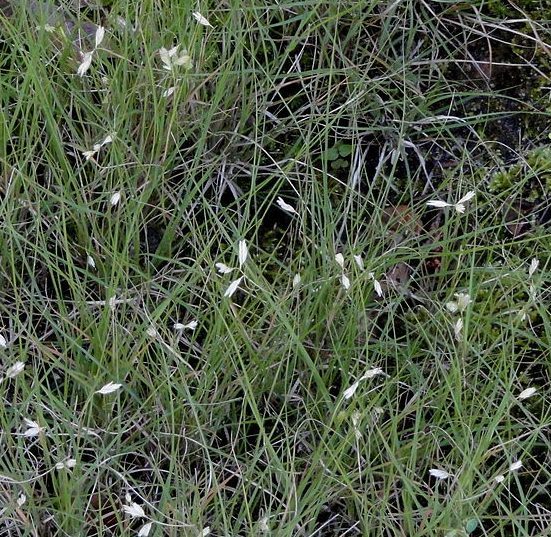
How about a plant zoo turf that does not need fertilizer, pesticides, or frequent mowing? Buffalo grass might be the answer and it has the additional benefits of being attractive, undemanding, an asset to wildlife, and an interesting historical highlight. A warm season perennial, it is native to North America where it is a component of the short grass prairie. It spreads by rhizomes, grows 3-12″ tall, and has soft, fine-textured, gray-green to blue-green foliage that curls to create a handsome turf. Inconspicuous male and female flowers appear on different plants from spring to fall. The male flowers are on small, comb-like spikes just above the foliage, while female flowers are in bur-like clusters on short stems down in the leaves. From mid fall to mid spring, and during times of drought, the plants turn brown. Tolerant of low fertility, drought, heat, and alkaline soil, buffalo grass has has been bred for both turf and forage. When used for a lawn it is equally attractive mowed 2-3″ tall or allowed to grow long and billow naturally. Buffalo, white tailed deer, and prairie dogs eat the foliage, early settlers used the turf to build sod houses, and plants are a larval host for green skipper butterflies. Several fine cultivars are available.
Type: Warm season perennial grass
Bloom Color: Tan
Bloom Time: Spring through fall
Size: 3-12″
Light: Full sun
Soil: Average to lean, medium moist to dry, well-drained; tolerant of drought and alkaline conditions
Hardiness: Zones 4-8
Photo Credit: Daderot Wikimedia Commons